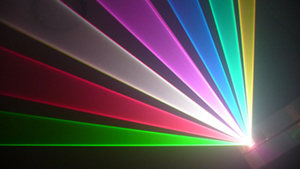Today i harvested the diodes i bought from DDL.
As i discussed with Rob, Robin and Simon there are several (two?) ways getting them from the metal casing:
1. Sawing (not recommended by some because of the sawdust), but if done careful it is possible
2. using 2 pair of plyers and twist and turn, knack, clean, no dust.
So i went for option 2, placed an antistatic bag underneath, applying force it twisted the pair of plyers, screech crack..... But to no avail.
I scraped of some metal and stupid thing didn't break.
So i thought i go for option 2, the saw.
I put the diode in a vise, diode facing down, carefully only sawing downwards not taking dust up. I sawed and when i was through i took it from the vise. Screwdriver in the sawed slot and turn. Voila...
Ehm... i noticed one of the "walls" of the open can was a bit bent.
Well do the other and started sawing at a different point (the "back" of the wall" of the open can). This protects the diode facet stuff thingy against the saw. This worked better.
Soldered some wires to it, looked up the instructions for Robins Die4Drive.
Easy i first played with the board, running it in a short circuit and turning the pots to "get the hang of it". I cut J3 so i could potentially run 500mA max.
Since i wanted to protect the diodes against dust and stuff i decided to place them quickly in an Aixiz housing (i think it's what they are called , the metal cans with lens i bought from DDL).
I used the CR&RDM method for mounting the diodes... CR&RDM i hear you think ?Yeah the Combined Rob & Robin Diode Mounting Method ;-)
The learned me this trick at UKLEM and it works:
I took a 5mm socket, put it in my drill press, put the wires i soldered to the diode in the socket in the drill press head , placed it carefully over the Aixiz housing and carefully pressed the diode to a snug fit into the front end of the diode housing. Nice....
Not surprisingly the "bent" one, didn't work...oh well, it was my first harvest.... so the other worked and emitted nice and BRIGHT red light. Ok, i thought, now it works, mount a Lasorb to protect it.
Soldered a lasorb to it and placed in a very cool black Z-Bolt cooling block.
Connected it again to the die4drive.... slowly turned R2 for the offset, where as before soldering the LASorb it started emitting light at around 20ma and started lasing around 60-90ma it didn't do anything.
Checked all my wires, the meter , the supply....
Well....sigh... too bad , i probably killed it stripping and touching the wires to mount the lasorb. Unbelievably sensitive then ? It worked damnit...
The light was cool and bright (i only run 150ma through it, it was already very bright and i could focus it into a nice dot)
Since i first wanted to protect it , then measure it with the LPM....
I already had the Die4chill ready to mount the Z-bolt blok on a TEC and see if i could make something "professionally".
Well professional and me are a long way from here, as it now seems
Well....sometimes you win some, sometimes you loose
Today i lost, but did learn a lot about harvesting, ESD, setting up a die 4 drive (thanks Robin, excellent piece of kit!). That's the positive thing.
Also thanks to Rob and Robin for sharing their CR&RDM method with me.
Will order some more diodes i think, since i liked the red light i saw.
Any tips, hints how to protect the diodes while working on them is appreciated. I WILL create dual red setup with tec cooling in the future !
I won't give up yet.




 Reply With Quote
Reply With Quote
 Unlike mine that sometimes doesn't break even.
Unlike mine that sometimes doesn't break even. 





 )
) ) The trick here is to have a nice pair of tweezers properly located to quickly pull the piece of PCB up before the solder has time to overheat the diode.
) The trick here is to have a nice pair of tweezers properly located to quickly pull the piece of PCB up before the solder has time to overheat the diode.


